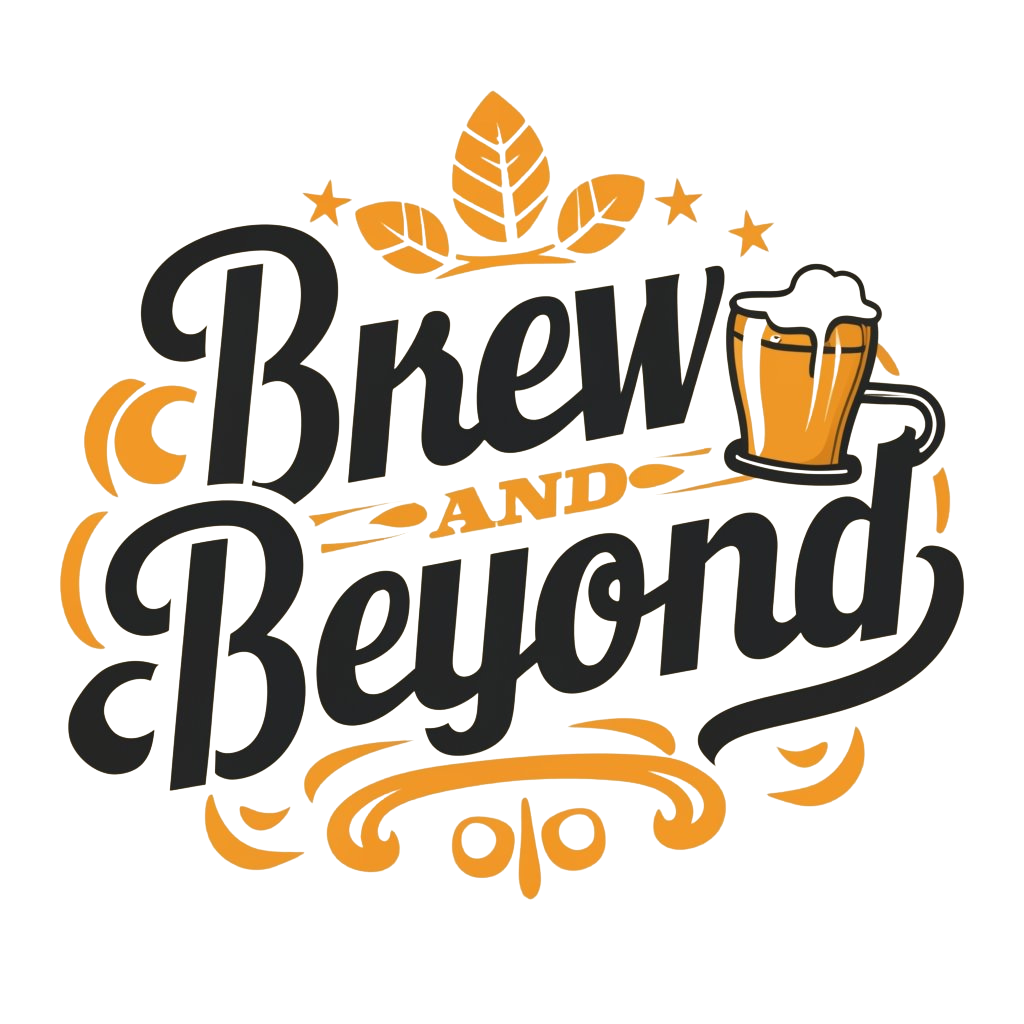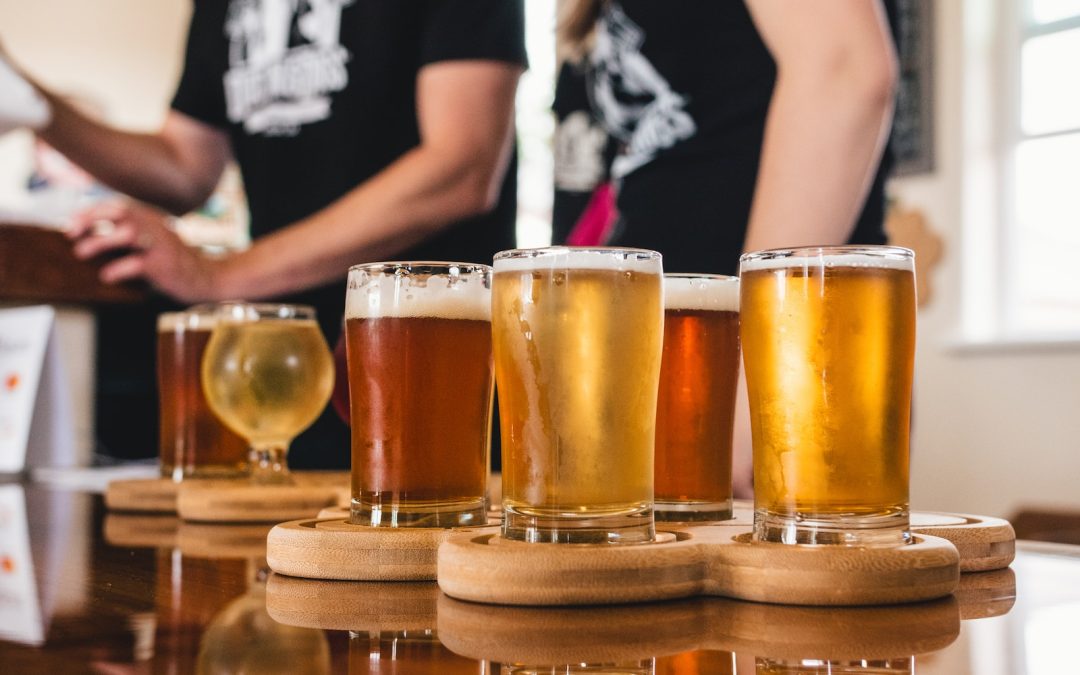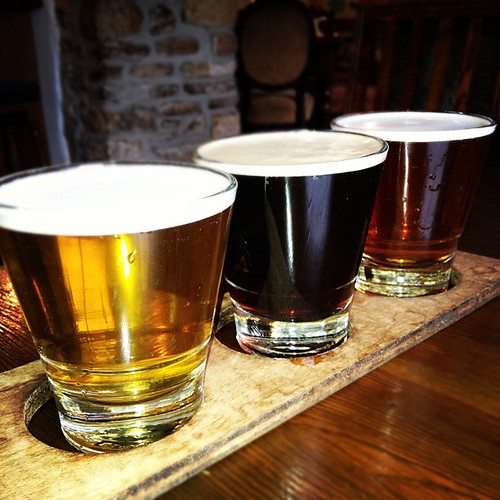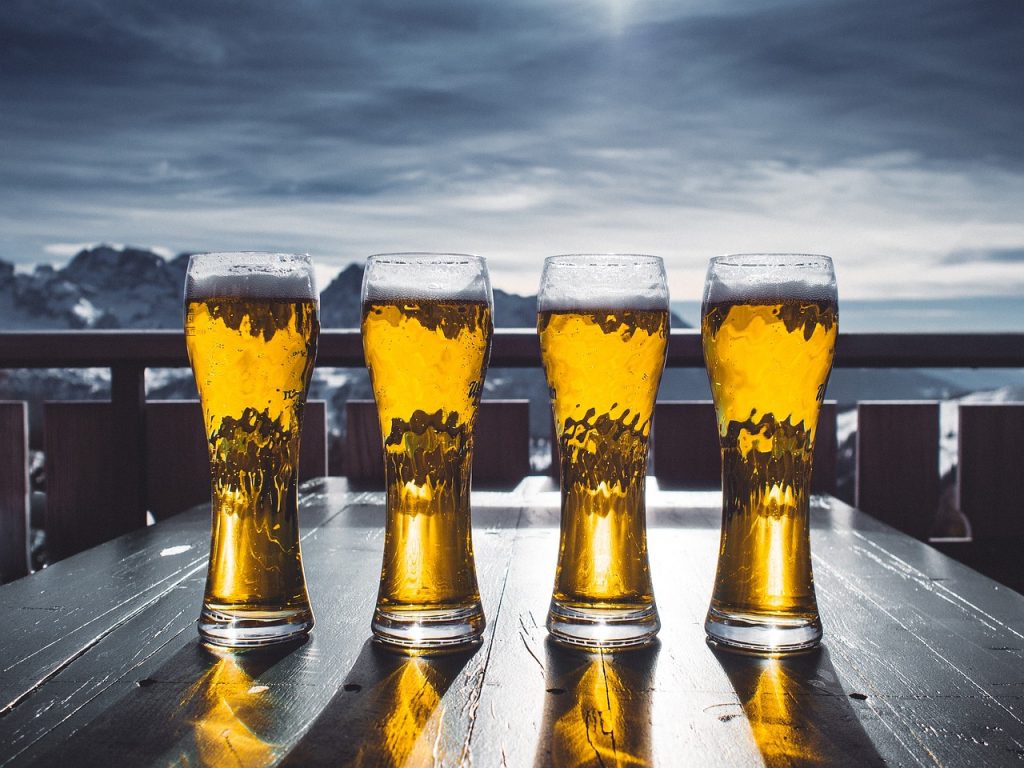Get ready to quench your thirst for knowledge as we embark on a fascinating journey into the world of beer! In this captivating article, we will explore the age-old rivalry between ale and lager, two titans of the brewing world. From their distinct brewing processes to their unmistakable flavors, we’ll delve into the differences that make these two beloved styles stand out. Whether you’re a beer aficionado or just curious about the art of brewing, join us as we unravel the secrets behind Ale vs Lager: A Deep Dive into Beer’s Biggest Rivalry. Get ready to sip and savor the rich history and flavors that have made these brews the ultimate rivals in the world of beer. Cheers!
Beer Basics
Definition of Beer
Beer is a beloved alcoholic beverage that has been enjoyed by people for centuries. It is made through a process of fermentation, in which sugars from various grains, such as barley, are converted into alcohol by yeast. This results in a carbonated beverage with a range of flavors and aromas.
Common Ingredients in Beer
The fundamental ingredients in beer include water, malted grains (such as barley or wheat), hops, and yeast. Water is crucial for brewing, as it provides the base and affects the overall quality of the beer. Malted grains contribute to the flavor, color, and body of the beer, while hops add bitterness and aroma. Yeast is responsible for the fermentation process, converting the sugars from the malted grains into alcohol.
The Brewing Process
The brewing process involves several key steps, starting with milling the malt to extract its sugars. These sugars are then mixed with hot water in a process called mashing, which activates enzymes that convert the starches into fermentable sugars. After mashing, the liquid is separated from the solid grain material in a process known as lautering. The liquid, called wort, is then boiled and hops are added for bitterness and aroma. After boiling, the wort is cooled and transferred to a fermentation vessel, where yeast is added. The yeast consumes the sugars in the wort, producing alcohol and carbon dioxide. The final step is packaging, which can involve bottling, kegging, or canning the beer for distribution and consumption.
Ale vs Lager: What’s the Difference?
Historical Origins
The distinction between ale and lager can be traced back to their respective historical origins. Ales have a long and rich history, with records of their existence dating back to ancient civilizations such as the Sumerians and Egyptians. Lagers, on the other hand, are a relatively modern creation, originating in Bavaria, Germany, in the 15th century. The different brewing techniques and yeast characteristics used in the production of ales and lagers contributed to their distinct flavors and characteristics.
Yeast Selection
One of the primary factors that differentiate ales from lagers is the type of yeast used in the fermentation process. Ales are fermented with top-fermenting yeast strains, scientifically known as Saccharomyces cerevisiae. These yeasts work at higher temperatures and tend to produce more fruity and estery flavors, contributing to the characteristic complexity and richness of ales. Lagers, on the other hand, are fermented with bottom-fermenting yeast strains, scientifically known as Saccharomyces pastorianus. These yeasts work at lower temperatures and produce fewer fruity flavors, resulting in a cleaner and crisper taste.
Fermentation Temperature
The fermentation temperature is another crucial factor that distinguishes ales from lagers. Ales are typically fermented at warmer temperatures, usually between 15-24°C (59-75°F), which allows the yeast to work more quickly and produce the desired flavors. Lagers, on the other hand, undergo a much cooler fermentation process, typically around 7-13°C (45-55°F). This slower fermentation process contributes to the smooth and clean taste associated with lagers.
Maturation Period
The maturation period also differs between ales and lagers. Ales have a shorter maturation period and are often ready to drink within a few weeks of being brewed. Lagers, however, require a longer maturation period, ranging from weeks to months, during which the beer undergoes a secondary fermentation and conditioning process at colder temperatures. This extended maturation period contributes to the smoothness and clarity of lagers.
Ale: The Flavorful Rebel
Characteristics of Ale
Ales are known for their bold and complex flavor profiles. They often exhibit a wide range of flavors, ranging from fruity and floral to malty and spicy. Ales tend to have a fuller body, with a richer and more robust mouthfeel. The higher fermentation temperature of ales allows for the production of various flavor compounds, resulting in a diverse array of ale styles and varieties.
Ale Styles and Varieties
There is a wide variety of ale styles, each with its distinct characteristics and brewing traditions. Some popular ale styles include Pale Ale, India Pale Ale (IPA), Stout, Porter, Belgian Ale, and Wheat Beer. Each style offers a unique combination of flavors, aromas, and appearances, catering to different taste preferences and occasions.
Popular Ale Brands
The world of ales is filled with renowned and beloved brands. Some popular ale brands include Sierra Nevada, Samuel Adams, Guinness, Newcastle Brown Ale, and Heineken. These brands have established a strong reputation for producing high-quality ales with consistent flavor profiles, ensuring that beer enthusiasts can always find a fulfilling and flavorful ale.
Lager: The Smooth Operator
Characteristics of Lager
Lagers are known for their clean, crisp, and smooth taste. They have a lighter body compared to ales, with a refreshing and effervescent mouthfeel. Lagers often have a subdued hop bitterness, allowing the malt flavors to shine. The cooler fermentation temperatures of lagers contribute to their mellow and well-rounded flavor profiles.
Lager Styles and Varieties
Like ales, lagers come in a wide variety of styles, each with its unique set of characteristics. Some popular lager styles include Pilsner, Helles, Dunkel, Vienna Lager, and Bock. These styles offer a range of flavors, from light and refreshing to malty and robust, giving beer enthusiasts plenty of options to explore within the lager category.
Popular Lager Brands
Lagers have gained widespread popularity around the world, and several brands have become synonymous with quality and consistency. Some of the most popular lager brands include Budweiser, Heineken, Stella Artois, Corona, and Beck’s. These brands have a strong presence in the global market and are favored by many beer drinkers for their reliability and enjoyable taste.
Taste Test: Ale vs Lager
Flavor Profiles
When it comes to flavor, ales and lagers offer distinct experiences. Ales tend to have a fuller and more complex flavor profile, with a wide range of flavors such as citrus, tropical fruits, caramel, and spices. On the other hand, lagers have a cleaner and more restrained flavor profile, with an emphasis on malt sweetness, balanced by subtle hop bitterness. The choice between ale and lager ultimately depends on individual preferences and taste preferences.
Aroma Differences
Ales and lagers also differ in terms of aroma. Ales often have a more pronounced and complex aroma, with fruity, floral, and spicy notes wafting from the glass. Lagers, on the other hand, have a more subtle aroma, with a focus on clean and malt-forward scents. The aromatic differences between ales and lagers can greatly influence the overall sensory experience of the beer.
Mouthfeel Comparison
Mouthfeel refers to the texture and physical sensation of the beer in the mouth. Ales tend to have a fuller and more viscous mouthfeel, which can be described as creamy, chewy, or velvety. Lagers, on the other hand, have a lighter and crisper mouthfeel, with a refreshing effervescence. The difference in mouthfeel between ales and lagers can greatly impact the overall drinking experience, making each style unique in its own way.
Popular Ale-Lager Hybrid Styles
India Pale Lager (IPL)
India Pale Lager, or IPL, is a hybrid style that combines the hop-forward characteristics of an IPA with the clean and crisp qualities of a lager. It offers a balanced flavor profile, with a noticeable hop bitterness and a smooth finish. IPLs are often characterized by their pale golden color, medium body, and vibrant aroma. This style is a popular choice for beer enthusiasts who enjoy the best of both worlds.
California Common
Also known as “steam beer,” California Common is a unique hybrid style that originated in California during the Gold Rush era. It combines the use of lager yeast with fermentation at higher temperatures, resulting in a beer that exhibits characteristics of both ales and lagers. California Commons are known for their amber color, medium body, and a balanced combination of maltiness and hop bitterness. This style is a testament to the ingenuity and creativity of American brewers.
Kölsch
Kölsch is a hybrid style that originated in Cologne, Germany. It is brewed using ale yeast but undergoes a longer and cooler fermentation period similar to lagers. Kölsch is known for its pale straw color, delicate hop bitterness, and subtle fruity esters. This style offers a refreshing and crisp drinking experience, making it a popular choice, particularly during warmer months.
Food Pairing: Ale and Lager
Classic Food Pairings for Ale
Ales offer a wide range of flavor profiles, making them versatile when it comes to food pairing. Some classic food pairings for ales include grilled meats, burgers, spicy dishes, hearty stews, and rich desserts such as chocolate cake or caramel-based desserts. The robust flavors and fuller body of ales can complement and enhance the flavors of these dishes, creating a harmonious dining experience.
Perfect Matches for Lager
Lagers, with their clean and crisp taste, pair exceptionally well with a variety of dishes. Some perfect matches for lagers include seafood, light salads, grilled chicken or fish, sushi, and dishes with delicate flavors such as creamy pasta or classic cheese dishes. The mellow flavor profile and refreshing nature of lagers provide a delightful contrast that allows the food flavors to shine through.
Experimental Pairings
With the ever-growing popularity of craft beer and the constant exploration of flavors, there are endless possibilities for experimental food pairings with both ales and lagers. Beer enthusiasts and chefs alike have been pushing the boundaries by pairing ales and lagers with unique dishes such as spicy Thai cuisine, gourmet cheeses, fusion dishes, and even desserts like beer-infused ice cream. The key is to find complementary flavors and balance between the beer and the food to create an unforgettable culinary experience.
Craft Beer Revolution: Impact on Ale and Lager
Craft Ale Boom
The craft beer revolution has had a significant impact on the ale brewing scene. Craft breweries worldwide have embraced the art of brewing ales, pushing boundaries, and creating innovative flavor profiles. Craft ales often embody the spirit of experimentation, with brewers utilizing unique ingredients, barrel aging techniques, and unconventional brewing methods. This has led to an abundance of diverse and exciting ale styles, attracting beer enthusiasts who crave variety and the thrill of discovering new flavors.
Craft Lager Renaissance
While ales have been at the forefront of the craft beer movement, lagers have also experienced a renaissance in recent years. Craft breweries have started to focus on producing high-quality lagers, showcasing their complexity and subtlety. This newfound attention to lagers has encouraged brewers to experiment with traditional lager styles, resulting in the emergence of unique and flavorful craft lagers in the market.
Craft Beer Market Trends
The craft beer market continues to grow at a rapid pace, with both ales and lagers playing a significant role in its expansion. Consumers are seeking out local breweries, unique flavors, and higher quality beer experiences. This has created a demand for craft ales and lagers, driving increased production and distribution. The craft beer movement has not only influenced consumer preferences but has also inspired larger commercial breweries to adapt and introduce their own craft-style offerings to meet the changing tastes of beer enthusiasts.
Brewing Preferences and Consumer Taste
Regional Preferences
Brewing preferences and consumer taste can vary significantly based on regional and cultural factors. In some regions, ales may be more popular due to historical traditions or local brewing practices. For example, in the United Kingdom, ales have a strong presence and are deeply intertwined with the country’s rich brewing heritage. In contrast, lagers are more prevalent in countries like Germany, where traditional brewing methods have long focused on producing clean and refreshing lagers.
Demographics and Taste
Demographics also play a role in shaping brewing preferences and consumer taste. Younger generations, known for their adventurous and experimental nature, may gravitate more towards craft ales with unique flavor profiles. Meanwhile, older generations or those with more traditional preferences may prefer the familiar and time-tested flavors of classic lagers. Brewery marketing and consumer education also play a vital role in influencing taste preferences and shaping consumer choices.
Changing Consumer Preferences
Consumer preferences are constantly evolving, driven by factors such as exposure to new beer styles, changing societal attitudes, and evolving taste preferences. The increasing popularity of craft beer has introduced consumers to a wide range of flavors and styles, challenging traditional notions of beer preferences. This has led to a significant shift in consumer preferences, with more people embracing both ales and lagers and appreciating the diverse range of options available in the beer market.
The Never-Ending Debate
Which is Better: Ale or Lager?
The question of which is better, ale or lager, is a matter of personal preference. Both styles have their own unique characteristics and offer a wide range of flavors and experiences. Some beer enthusiasts may prefer the complexity and richness of ales, while others may appreciate the clean and refreshing nature of lagers. The beauty of beer lies in its diversity, and the never-ending debate between ale and lager only serves to highlight the endless possibilities and choices available to beer lovers.
Global Perspectives
The preference for ale or lager can also vary greatly on a global scale. Different countries have different brewing traditions, cultural preferences, and regional tastes. While ales may dominate in some regions, lagers may reign supreme in others. Exploring the global beer landscape can provide valuable insights into the rich tapestry of beer cultures around the world and the diverse range of styles and flavors that are cherished by beer enthusiasts worldwide.
The Beauty of Choice
In the end, the beauty of the ale versus lager debate lies in the freedom of choice. Beer lovers can explore and appreciate both styles, discovering new flavors, and enjoying the unique characteristics that each brings. Whether it’s a rich and complex ale or a crisp and clean lager, the world of beer offers an endless array of options to cater to every taste and preference. So, raise a glass and celebrate the rivalry between ale and lager, because in the world of beer, there is no wrong choice, only the chance to savor and enjoy.
© 2023 by brewandbeyond.com. All rights reserved. No part of this document may be reproduced or transmitted in any form or by any means, electronic, mechanical, photocopying, recording, or otherwise, without prior written permission of brewandbeyond.com.





